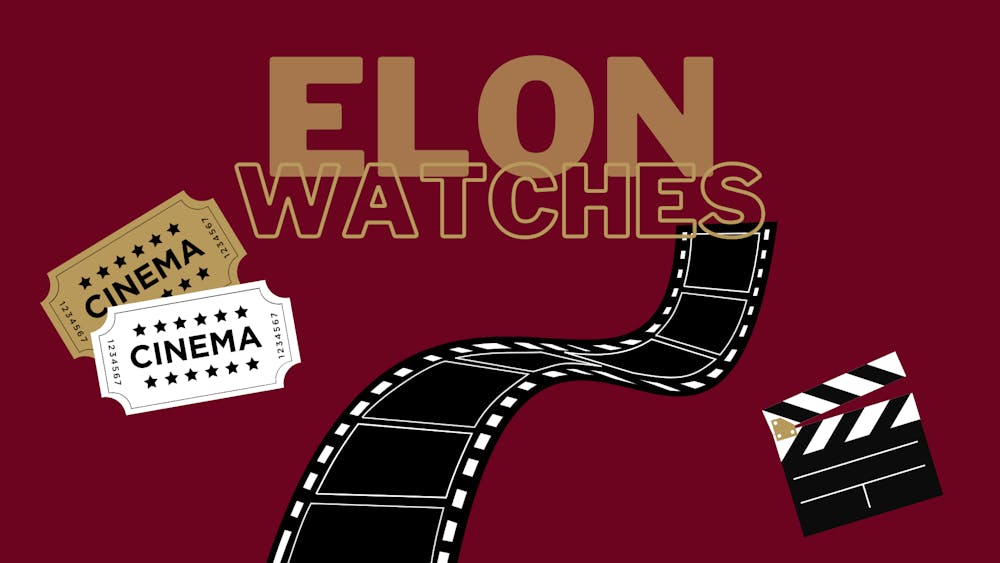As a critic, those moments when I walk out of a theater, or take off my headphones, or turn the last page and leave with a mind too stunned to speak are the moments I live for. Those movies or songs that knock my head out my skull and leave me speechless with a million thoughts invigorate me. Movies like this are few and far in between — and I’m glad they are, because while a movie as brilliant as “Everything Everywhere All At Once” excites every cell in my body with its witty dialogue, beautifully written humanity and sniper shot accuracy of 21st-century existentialism, it’s honestly exhausting to witness something that so artfully and brutally mirrors the pathetic breath of my humanity and shoves it in my face with a twenty-minute kung fu fight scene.
I’ve seen “EEAAO” three times now, and contemplating the movie has become a regular part of my daily life these last few weeks. I want to say right now that I’m going to try to explain what I think of this movie but will inevitably fail. If spine-tingling ecstasy, heart-wrenching family drama, farcical metaverse humor and emotional depth akin to the greatest films of all time mean anything to you, I suggest you stop reading right now and come back once you’ve seen it. I’ve tried to restrain my enthusiasm so as to not build up too big of expectations, but it's difficult to know where to even start with this film without spoiling a detail that the movie could explain better than me.
Most simply, “EEAAO” is a brilliant family drama that uses kung fu, campy aesthetics and farce to tell an all-encompassing story of existential shock. Evelyn Wong faces a challenge that is both so specific yet so relatable at the same time: herself. As a Chinese-American, middle-class, immigrant mother, her perspective explores race, sex, sexuality, class, generational conflict and trauma all at once, yet her story never feels alienating. This wide-sweeping intersection of identities, plus the amorphous but timeless conclusion, leaves the viewer with no more tears left to cry and all the optimism to feel a little better about getting out of bed each morning.
The one consistent point that all critics have reached consensus on with “EEAAO” is its utter overstimulation of the senses. The movie is a 139-minute gauntlet of salt-soaked cheeks, bruised knuckles and the bitter taste of regret. It’s back-to-back mayhem, offering another iconic scene, moment or image every ten minutes. Like any great movie, “EEAAO” rewards repeat viewing, but unlike the rest, it keeps offering brand new experiences even on the third, fourth and fifth viewing. The hundreds of interweaving storylines and details provided through the multiverse elevate each element. Each joke is funnier in five different ways, each roundhouse kick happens in five different universes and each splintered universe tells the same story a million times.
Action films with beating hearts are fascinating in how they allow each of their characters to live in the universe in their head. The impulse that could make someone feel like John Wayne is the same one that could make them jump a car over a bridge. But what’s even more fascinating is how “EEAAO” allows each character to live in their own network of a million universes. The concept of “verse-jumping” functions not only as the film’s signature sci-fi tech, but also as a vehicle for the filmmakers to imitate a million different genres and aesthetics in one common narrative. Each universe transports the story to another world, cutting the frame to a new aspect ratio, splashing a completely different color palette and rearranging characters and conflicts into completely different sequences.
In melding a cornucopia of film genres together, the movie serves as meta-narrative and magnum opus for lead actress Michelle Yeoh, whose greatest strengths and impact as an actress are compiled into this one film. Yeoh’s legacy as a kung fu legend in movies like “Supercop and Crouching Tiger,” “Hidden Dragon” and her drama repertoire in “Crazy Rich Asians” is echoed in “EEAAO,” which uses each verse-jump to prove all her emotional mastery as an actress and more. In a profile with GQ, Yeoh said, “[This movie] is something I’ve been waiting for for a long time … that’s going to give me the opportunity to show my fans … my family, my audience, what I’m capable of.”
In each of my viewings, I’ve managed to cycle through believing that the film was about the mechanisms of regret, then the friction of parenthood and the everlasting search to find one reason to keep caring. I’ve scraped dirt from my fingernails and washed the salt from my eyes in just trying to explain this movie to you, to myself, and it scares me to think I’m still so naive in my attempts to describe existence. But in the way that “Everything Everywhere All At Once” retells the way we use multiverses to see what we could’ve been, I’m reminded of the fears that keep us in bed and the stories that pull us back to the present.


